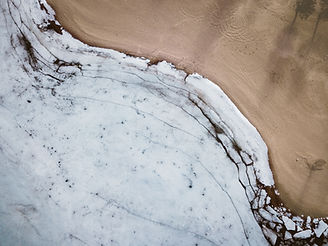PETROLEUM & REMEDIATION
Harnessing the Power of Microbes: Revolutionizing Petroleum and Bioremediation Industries

Oil spills can have serious environmental and economic impacts, as they can contaminate soil and water and harm wildlife. One way to remediate oil spills is through the use of microbes, which will break down and degrade the spilled oil.
Microbes are tiny organisms that are found in nearly all environments and play a vital role in the global carbon cycle by breaking down organic matter. Some microbes, such as bacteria and fungi, are able to break down oil and other hydrocarbons as a source of energy. When oil spills occur, these microbes can be introduced to the affected area to help break down the spilled oil.
There are several ways in which microbes can be used to remediate oil spills:
Bioremediation: is a process that uses microbes to break down environmental contaminants, such as oil, into harmless byproducts. This can be done through the use of naturally occurring microbes or through the introduction of specially selected microbes that are able to break down the specific type of oil that has been spilled.
The use of microbes for oil spill remediation is an effective and environmentally friendly way to clean up oil spills and mitigate their impacts. However, it is important to carefully select the appropriate microbes for the specific type of oil that has been spilled and to properly monitor the bioremediation process to ensure that it is effective and safe.
Petroleum is a complex mixture of hydrocarbons that is made up of a variety of compounds, including alkanes, alkenes, and aromatic compounds. Many microbes, including bacteria and fungi, are able to break down and degrade these hydrocarbons as a source of energy. Here is a list of some of the microbes in our consortium that break down petroleum:
-
❖ Pseudomonas: Pseudomonas is a type of bacterium that is found in a wide range of environments, including soil, water, and plants. Some species of Pseudomonas are able to break down hydrocarbons, including alkanes and aromatic compounds.
-
❖ Acinetobacter: Acinetobacter is a type of bacterium that is found in soil and water. Some species of Acinetobacter are able to break down a variety of hydrocarbons, including alkanes, alkenes, and aromatic compounds.
-
❖ Rhodococcus: Rhodococcus is a type of bacterium that is found in soil and water. Some species of Rhodococcus are able to break down hydrocarbons, including alkanes, alkenes, and aromatic compounds.
-
❖ Bacillus: Bacillus is a type of bacterium that is found in soil and water. Some species of Bacillus are able to break down hydrocarbons, including alkanes and alkenes.
-
❖ Aspergillus: Aspergillus is a type of fungus that is found in soil and on plants. Some species of Aspergillus are able to break down hydrocarbons, including alkanes and aromatic compounds.
-
This is just a small sample of the many different types of microbes that are able to break down petroleum within our consortium. The ability of a specific microbe to break down petroleum depends on the specific type of hydrocarbons present and the conditions in which the microbe is growing. In general, the use of microbes for petroleum degradation is an effective and environmentally friendly way to clean up oil spills and mitigate their impacts.

Get in Touch
Email us today for a free consultation: info@micannco.com

